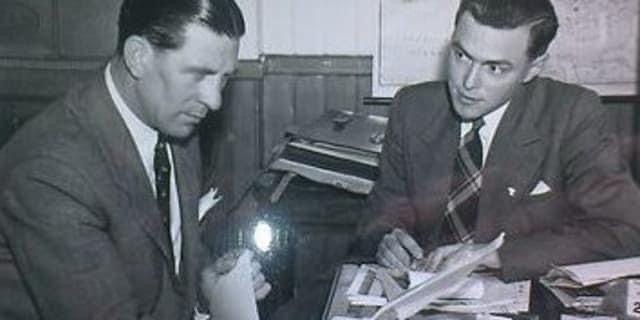Programme Notes Part 8
- debscoady
- Jul 12, 2022
- 2 min read

At the beginning of the 1948-49 season the Chelsea programme was a rather austere affair compared to issues of years gone by. Plain in appearance, it was no more than a fold out pamphlet and so it continued up to the Wolverhampton Wanderers programme on 11th December 1948.
It was then that a young man appeared on the scene who would make history. Albert Sewell had left school at the age of 16 to take a job in the sports section of the Daily Sketch and after World War 2 he became a trainee journalist at the Press Association. In 1948 he was given the job of writing Chelsea’s match programme and he announced his arrival in spectacular fashion. For the Christmas Day game at Stamford Bridge against Portsmouth, the 42,153 spectators were treated to a vast improvement when it came to the programme.
Vastly expanded from what had gone before, Albert produced the world’s first magazine style football programme. Consisting of sixteen pages, it included notes from Manager, Billy Birrell as well as in depth information about Chelsea’s opponents and statistical information that could satisfy the wildest dreams of many an anorak.

The front cover as well as the inside cover had the familiar cartoon feature that had been a staple of the Chelsea programme over the decades. These were drawn by Roy Ullyett, the foremost sports cartoonist of his generation. He had his first cartoons published in a school magazine at the age of 13 and after the war this 6ft 3” giant with the flying officer handlebar moustache and curled pipe that hung permanently from the corner of his mouth, whether lit or not, began working at The Star and The Sunday Pictorial.

His cartoons adorned just two covers, but the ones on the inside cover became a regular feature of the 1948-49 season. Chelsea’s official photographer then accompanied the team for every game and then either action shots from games, or photographs of the players featured on the cover. Apart from the extra statistical information, action shots from previous games and accompanying text were also included in the programme, something totally unique in football at the time.
Another important person that Albert Sewell got on board was footballer and journalist, Bernard Joy. He was the last amateur player to turn out for the England International team and he wrote a regular column for the programme. The programme was a sensation, but the best was yet to come. The design and content would be improved upon and world records in sales would be achieved as the programme entered what I believe were its golden years.
Without Albert Sewell though, it may never have come to pass and I am sure you will join me in paying tribute to this extraordinary gentleman to who us anoraks owe so much.


By Paul Waterhouse, Bygone Chelsea 1905-99





















Comments